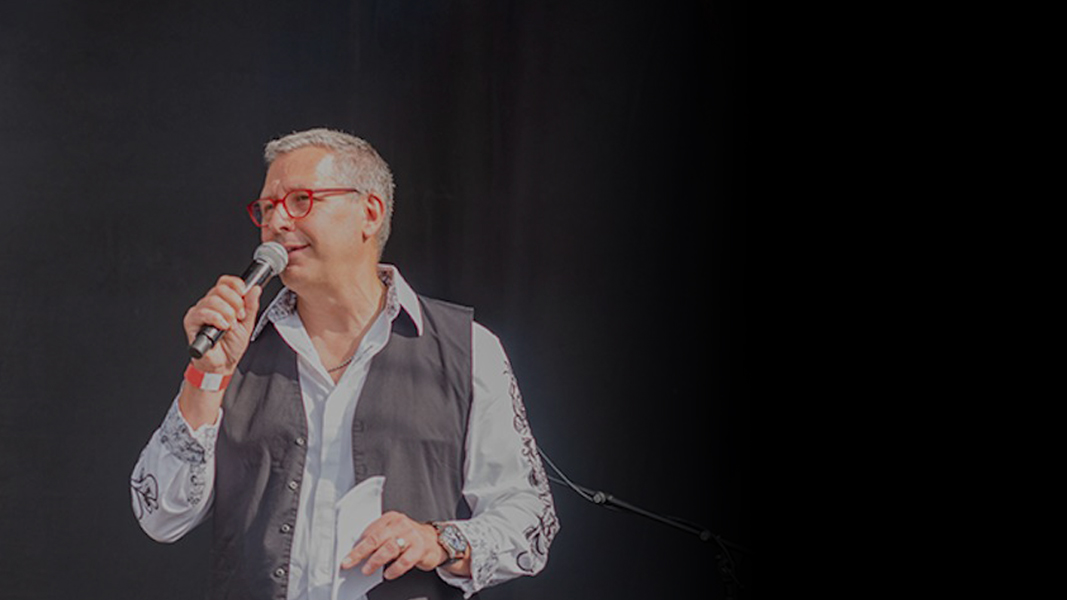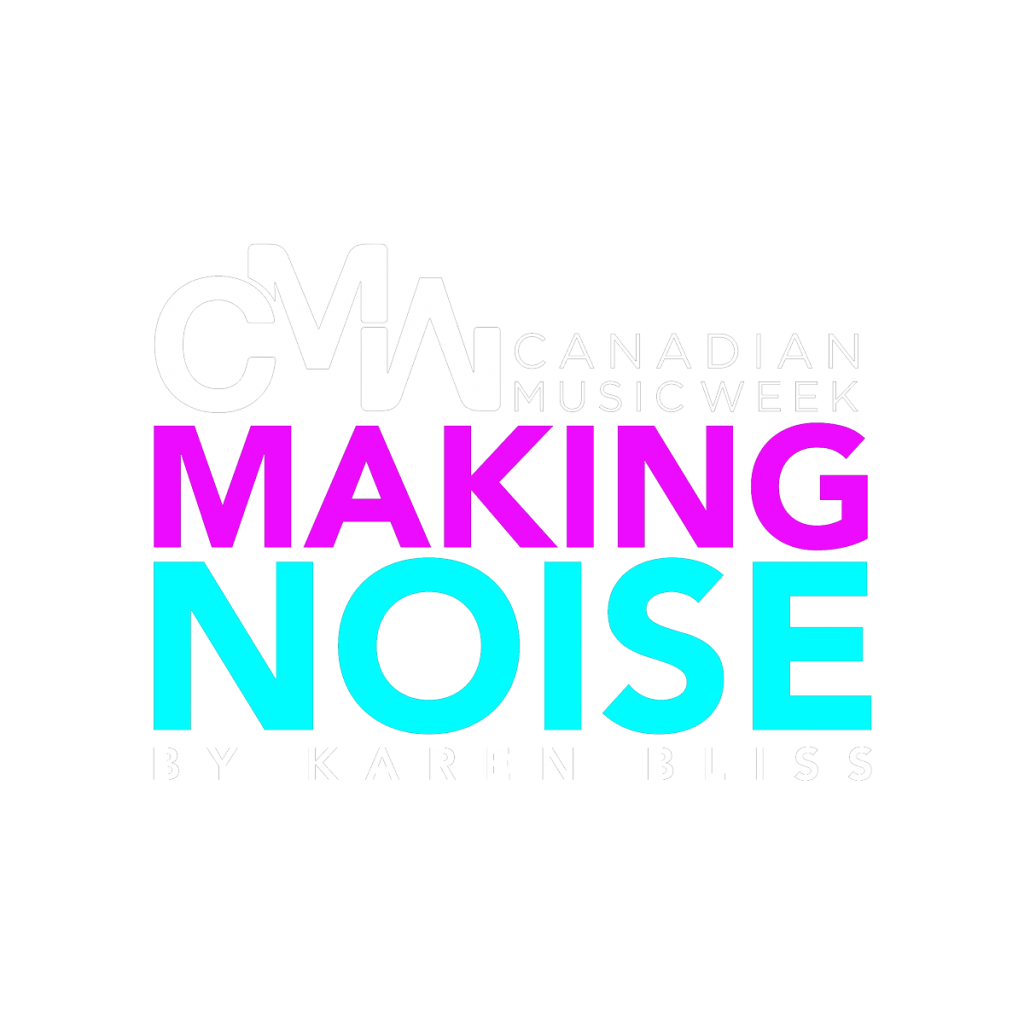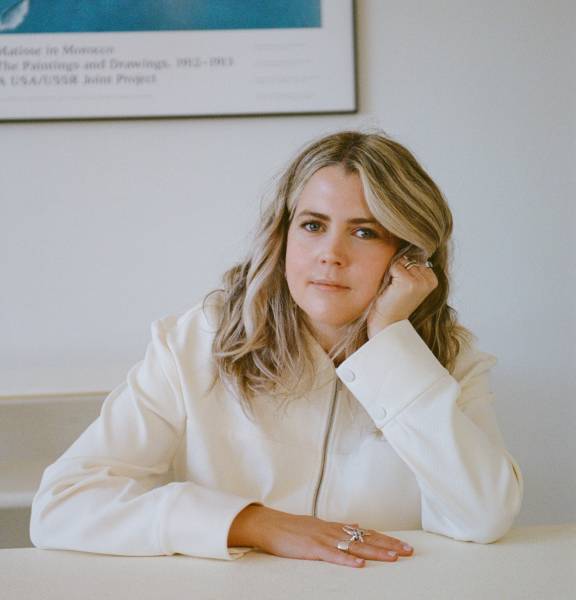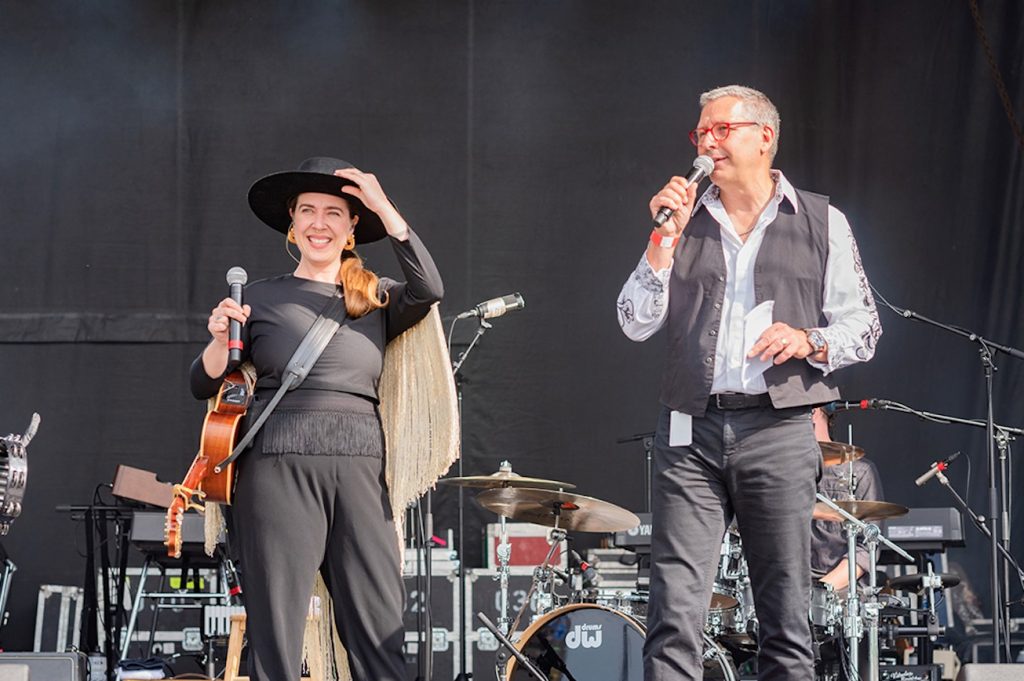
Montreal’s John Sicard once wished he had pursed a music career, but instead the Bachelor of Computer Science graduate joined a rising IT company in 1988 called Fastman Inc. in Ottawa, remaining there for five years before starting as a software engineer with Enterprise Planning Systems, which provided supply chain management to multi-national corporations — world’s apart from music. The pioneering software company underwent a series of name changes and growth over the years, as Sicard moved up the ranks. Renamed Kinaxis in 2005, he became its president and CEO in 2016. The projected revenue for 2023 is $420-430 million.
Over the decades, Sicard never lost his love of music. The amateur drummer has long wanted to help the industry avoid what he calls “future state atrophy,” musicians leaving the industry because they simply cannot make a living. During the pandemic, when the live music industry was devastated and artists could not tour, Kinaxis partnered with the Canadian Live Music Association (CLMA) to launch Kinaxis InConcert, paying for emerging acts to livestream shows from stages across Canada. The initiative led to The Catapult Collaboration, a partnership with ArtHaus and its Toronto-based founders, Juno Award-winning artist Serena Ryder and her self-described “womanager” Sandy Pandya.
“A collective of business leaders and creative changemakers, The Catapult Collaboration is committed to supporting emerging musicians by pairing them with established artists for unique live paid performance opportunities – igniting, cultivating, and promoting the future of music,” the June 2022 press release states.
The inaugural event had been held the previous month, May 10, 2022, in San Diego, CA, a unique private concert for Kinaxis staff aboard the USS Midway aircraft carrier with emerging artists Adria Kain and TALK given the opportunity to open for Grammy Award-winning rocker Melissa Etheridge, and Ryder. The second Catapult Collaboration was June 3, in Ottawa, ON for the grand opening of Kinaxis’ impressive 161,000 sq. ft. headquarters. The private party for about 650 employees and their guests featured headliners Blue Rodeo and Ryder, and opening acts Clerel and TALK. Those were the only two for 2022.
The next Catapult concert will be June 10 in Nashville, headlined by Brothers Osborne with emerging artist Harper O’Neill.
Kinaxis is also co-sponsoring an ongoing emerging artist series at Billy Bishop Airport, starting May 27 as part of the city-wide program Doors Open. Later, in the summer, and over the December holidays, there will be a few dozen artists each performing two 45-minute sets at the airport, curated by ArtHaus.
“Kinaxis’ support of ArtHaus through the Catapult Collaboration allows us to run several programs that support emerging artists,” says ArtHaus’ director of community, Noah Schwartz, “This includes the Billy Bishop live series, which is run in collaboration with the airport and City of Toronto. A second initiative is the pay-it-forward studio program, which brings together songwriters, producers, and artists from underserved areas and communities to use our studio and receive mentorship from industry professionals.
“Third,” Schwartz continues, “is our Art of Growth creative and social entrepreneurship program, which right now is focusing on an organization called Hoops for Hope, run by a young Indigenous artist and leader River-Christe White, which focuses primarily on advocating on behalf of indigenous people with disabilities.”
Prior to the announcement of these three programs and Kinaxis’ further investment in emerging talent, Karen Bliss spoke with Sicard at Kinaxis’ new Ottawa headquarters about The Catapult Collaboration and where he’d like to take it.
KB: What’s the relationship you hope to build with these rising talents?
JS: First, I want them to survive. Coming out of this pandemic, I feel like if we don’t do something there’s a future state atrophy. We don’t see it yet. There’s incredibly talented individuals that are retreating and we don’t know it. It’s not like they’re raising their hand saying, “Hey, I’m leaving, I’m going to work for Amazon” or something. So I do worry about a future state atrophy in music, period. Music is the bedrock of culture, for me anyway. It’s a source of joy. It’s a source of escape. It’s medicine for the soul. I can’t imagine letting that happen. And I felt like businesses are forever consumers, but never collaborators. I learned this lesson from Erin Benjamin [CEO of the Canadian Live Music Association]. She’s one of my new best friends and she’s taught me a lot. She has a very strong pedigree in music. She understands the entire industry and how it works. She was a participant [an artist]. She also knows a lot about business. We felt like there’s a way to get business leaders and the music community to begin a collaboration, which is what we’re calling this: Catapult.
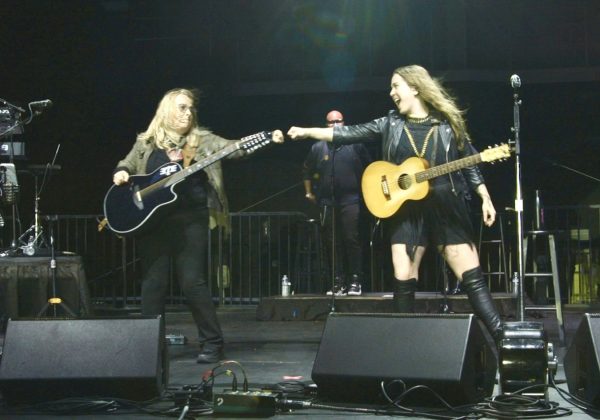
KB: The optics on corporate gigs need to change. Artists don’t talk about them with the same pride. In fact, people don’t really find out about them, unless they’re in attendance. It’s almost like they’re embarrassed to take them, but they’re good money, often higher than what they would get from public ticketed shows. But why is The Catapult Collaboration opportunity different than any other opening slot for a bigger artist?
JS: Is it good money for emerging artists? This is one of the things that we’re tackling. Established artists have a role to play, to pull up emerging ones that are in trouble, quite honestly. Many of them are just retreating, as I’ve said. And so, this is different. We did this in the U.S. with Melissa Etheridge. Of course, she’s like, “Okay, corporate gig.” “No, you’re going to hand-pick an emerging artist to share this stage with, not just, ‘Here’s the opening act’ and the promoter says, ‘You should be paying me to share this stage with Melissa. Etheridge.’” We know that this happens. Or “I’ll give you 200 bucks,” and the established artist is fine. The formula here [Catapult] is three participants: the business leaders collaborating with the music industry and established artists. So a pillar of the business community and a pillar of established artists supporting emerging ones in ways they never even thought about.
KB: People forget there are humans behind corporations, and they are often slammed for trying to do something good. People are distrustful. You get slammed for being at the top even though you weren’t always at the top, and artists traditionally rebel against big corp. What is your motivation?
JS: I’ve been at Kinaxis for [29] years. I started cutting code, blasting the Cranberries in my ears and writing hundreds and hundreds and hundreds of thousands of lines of software. That’s what I did. I never thought I’d be here.
KB: As a drummer, did you ever pursue music as a career?
JS: When I met Serena, the first thing out of my mouth was, “I wanted your life.” I really did. I gave everything to it. I failed high school. I didn’t apply myself. I did everything for music. I was about 20 years old, playing the circuit in Montreal. We might’ve been the main attraction, but the band before us had a drummer who was 17 years old and a hundred times more talented. It was hard to absorb that. At some point, I ended up having to look for a plan B because it wasn’t going to work for me. But here we are some 40 years later, and going into my chapter 3, it’s an opportunity to take everything I’ve learned and apply it back to an industry I would’ve loved to be part of, and people, by the way, I would’ve loved to call friends for 40 years.
KB: Beyond throwing a great party and seeing emerging talent open for established acts, how are you going to extend the relationship through Catapult? The press material states that there are four pillars to the initiative: “live performance, recordings and production, wellness, and accessibility.” How will you help artists besides providing opening slots?
JS: Certainly, one of the things Kinaxis is going to do is invest in emerging artists. Even at the Kinaxis party, you might think, ‘Oh, that’s a corporate gig.’ Well, we put in high-end video equipment. You walk away with a recording; you walk away with a video content. This is media for you [the artist]. We’re record the whole thing and hand it off and you get paid. And I’m not adverse to flying musicians coast to coast to coast. Why? It’s a win for employees; we get entertained. It’s a win for the artists because they get a gig and they’ll get media out of it.
KB: How often do you want to do that?
JS: I’d like to do it once a week, once every two weeks. Above and beyond finding ways to share the stage is getting established artists to work with emerging ones and supporting them. We’re going to be working in lockstep with ArtHaus on the things that we don’t know how to do — things like workshops for new emerging artists, understanding the business, a mental wellbeing side. They have an established track record on how to do it. They need money. Some people want to put their name on a NASCAR. Some people want their logo on a very wealthy golfer’s hat. I’m not gonna do that.
KB: There are some big companies with their name on major music events and venues — RBC, Rogers, TD Bank, Budweiser, Molson. Red Bull, Converse. You don’t want a Kinaxis Presents or a Kinaxis-sponsored venue?
JS: No. The thing I don’t like about it is it’s about us, not about the artists. I think the thing that gives this more credibility, I hope — and, of course, I can only hope because you can’t stop people from being speculative and thinking, ‘Well, what are you trying to do here?’ — is that I’m locking arms with ArtHaus. I’m locking arms with Serena Ryder and with Melissa Etheridge and with Blue Rodeo. And I have to believe that there are more established artists that, when they look at what we’re doing, they’ll raise their hand and say, ‘What can I do to help?’ I mean, for them, they’ve already crossed over the chasm; they’re on the other side; they’re fine. You have to create the conditions where people can flourish.
KB: The Catapult Collaboration is a lot of work, and you obviously have a lot of work, leading a global company. As you lean into the music industry, and meet more people, they will be contacting you and cutting into your “day” job as CEO of Kinaxis.
JS: This is where, again, having friendships that are growing, with people like Erin and Mélanie Brulée [executive director, Ottawa Music Industry Coalition] helps because I don’t know what I don’t know and they’ve all said to me, “Look, we’re going to help.” I have what I think is a sound motive. I am developing strong bonds with people I trust. The seeds are being planted. I have a lot of faith that this is going to pick up. I think that emerging artists are going to really appreciate it. Serena has the connection with the major artists, and we are going to be going to them with this to help. Eventually, I’d like to take this idea to Europe and to the U.S. as well. The contacts I’ve got are all CEOs.
KB: How will you get other CEOs involved?
JS: I’m part of what’s called Tech Canada. It’s collection of 2000 CEOs. What if, out of 2000 CEOs, I get 50 of them, 20 of them? It’s 20 times more than me, and momentum begets momentum. The same is true on the artist side. If they see Serena, see Melissa, see Blue Rodeo, we can get others to lend their name to this, but not just that — will they agree to the social contract behind doing what we’re doing? You can imagine, eventually momentum will beget momentum on that side too. Artists are going to call ArtHaus saying, “How can I help?” That’s when you know that the ball is rolling on its own.


